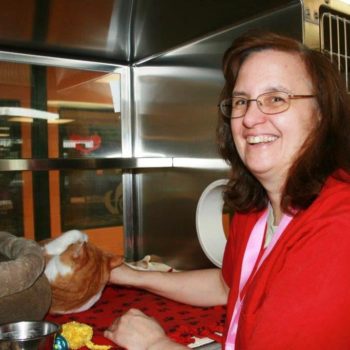Dane County, WI, is a good place for homeless pets, thanks to Maddie and the hard work of local animal adoption organizations.
The Maddie’s® Pet Rescue Project in Dane County was a seven-year, collaborative effort to end the euthanasia of healthy and treatable shelter animals in the community. Four organizations came together during different periods of the grant to decrease the number of animals brought to shelters, decrease the number of animals euthanized and increase the number of animals adopted or sent to long term rescue organization.
How did they do? Asilomar Live Release Rate for the community increased from 70 percent in the baseline year (2007) to 86 percent in the final year of the project (FY2012-13). Best of all, they have maintained their adoption guarantee for healthy and treatable shelter dogs and cats, and achieved an Asilomar Live Release Rate of 88.7 percent in 2015.

How did they do it? One successful strategy to reduce shelter intake was helping pets stay with the families that loved them when they were facing hard times — a huge issue always, but particularly so during the economic downturn that occurred during the grant period.
“We examined the reasons that people surrender or abandon their animals and found that a great many are due to insufficient funds to care for the animal or behavior problems with the animals,” reported the Dane County Humane Society.
“DCHS began several community outreach programs designed to help decrease animals coming to the shelter. Our ‘Help Keep Pets in Their Homes’ program has collected and distributed more than 150,000 pounds of pet food and cat litter to Dane County food pantries. Started in December 2011, during a point of very hard economic times across the nation, DCHS and the Community Action Coalition for South Central Wisconsin partnered with other organizations to collect pet supplies to be made available for families utilizing food pantries.”
For the Dane County Coalition, adoption guarantee means that every healthy and treatable cat or dog that comes into the shelter will be saved. They met this goal in April 2012, two months before their targeted deadline, and have remained adoption guarantee since.
“Although our combined save rate is not quite to 90 percent, we are moving closer toward this goal each year,” they said. “There continue to be a number of animals coming into the shelter with numerous health and behavioral conditions which take a great deal of time and resources to treat. The collaborative continues to work together and with other area resources to increase our ability to handle these really tough cases.”
You can find the complete reports below:
2015 Animal Population Overview
Don’t miss more innovative ideas for pet fostering, adoption, shelter medicine and stories about how pets make our lives better and happier — sign up here!

